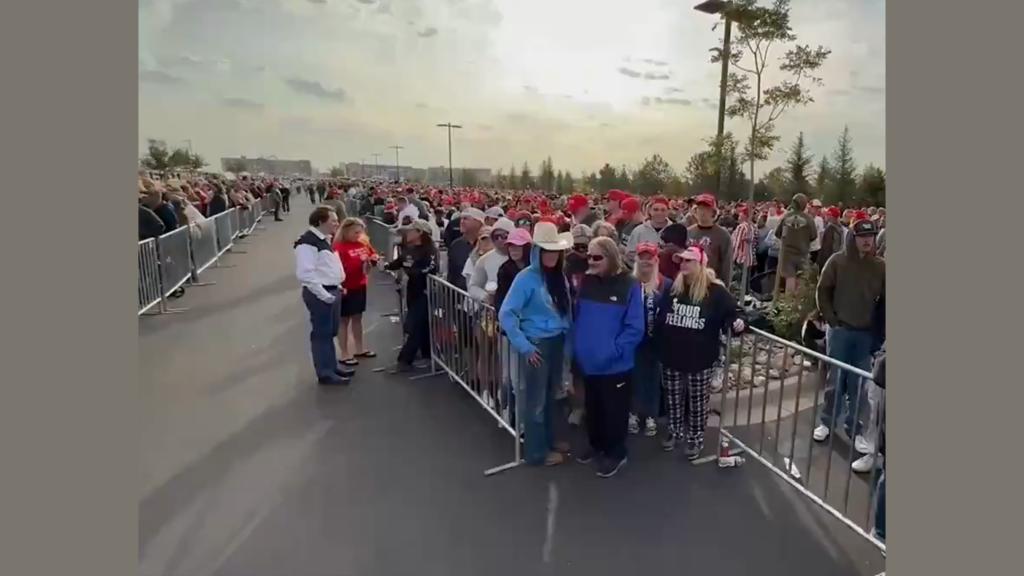On an early Friday morning in Aurora, Colorado, anticipation hung thick in the air as thousands began lining up for a rally featuring former President Donald Trump. Despite the scheduled start time of 3:00 PM ET, the crowd began gathering hours in advance, some lining up as early as sunrise. The sheer number of attendees was overwhelming, with the queue stretching beyond the designated gates and into a nearby parking lot, signaling the strong support Trump maintains even in regions traditionally leaning Democratic. Trump’s campaign touted the event as sold out, demonstrating his enduring appeal among a significant segment of the electorate.
As the crowd built throughout the morning, various social media updates emerged showcasing the vibrant atmosphere. Supporters shared images and videos that captured the excitement surrounding the rally. Comments reflected a mix of disbelief and enthusiasm as some observers noted the astounding length of the line, which suggested a possible resurgence for the Republican political presence in Colorado. This fervor raised questions about the state’s political landscape and whether it could still swing toward Trump, especially given his capacity to draw massive crowds despite the state’s recent blue tendencies in elections.
Though issues arose regarding transportation to the rally location, such as bus complications meant to shuttle attendees from offsite parking, this did not deter the motivated supporters. Reports indicated that individuals resorted to making their way on foot, navigating through surrounding brush to access the rally. This determination illustrated a deep commitment to Trump’s message among his followers, emphasizing that they were undeterred by logistical challenges in their quest to hear him speak.
The rally speeches were expected to address several pressing topics, including the ongoing controversies surrounding the Biden administration’s policies, particularly in relation to immigration and local crime rates. Aurora has recently faced challenges linked to an increase in Venezuelan gang activity, leading to a heightened sense of urgency among community members concerned about safety and their quality of life. Supporters anticipated that Trump would capitalize on these local issues to critique the current administration and galvanize his base against perceived failures by Democratic leadership.
Moreover, the funding initiatives stemming from the Biden-Harris administration, such as the $3.8 billion allocated to Colorado under the “American Rescue Plan,” had stirred discontent among some Aurora residents. Critics pointed out that Aurora city officials diverted local resources into funding left-leaning non-governmental organizations, which contributed to housing arrangements for the influx of Venezuelan immigrants. This situation played into the broader narrative of dissatisfaction with the administration’s handling of domestic issues, a theme likely to resonate within Trump’s speeches to rally-goers.
In summary, the rally in Aurora served as a microcosm of the broader political landscape in the United States as Trump aimed to reaffirm his position within the Republican Party and challenge the current administration’s policies. The outpouring of support in a state that has leaned blue in recent elections highlighted not only Trump’s magnetic pull but also the shifting sentiment among voters who may feel disenfranchised by the current political climate. The event was set to be more than just a campaign stop; it symbolized a larger grassroots movement striving to reclaim influence and advocate for issues that resonate with many citizens facing economic and social challenges today.

